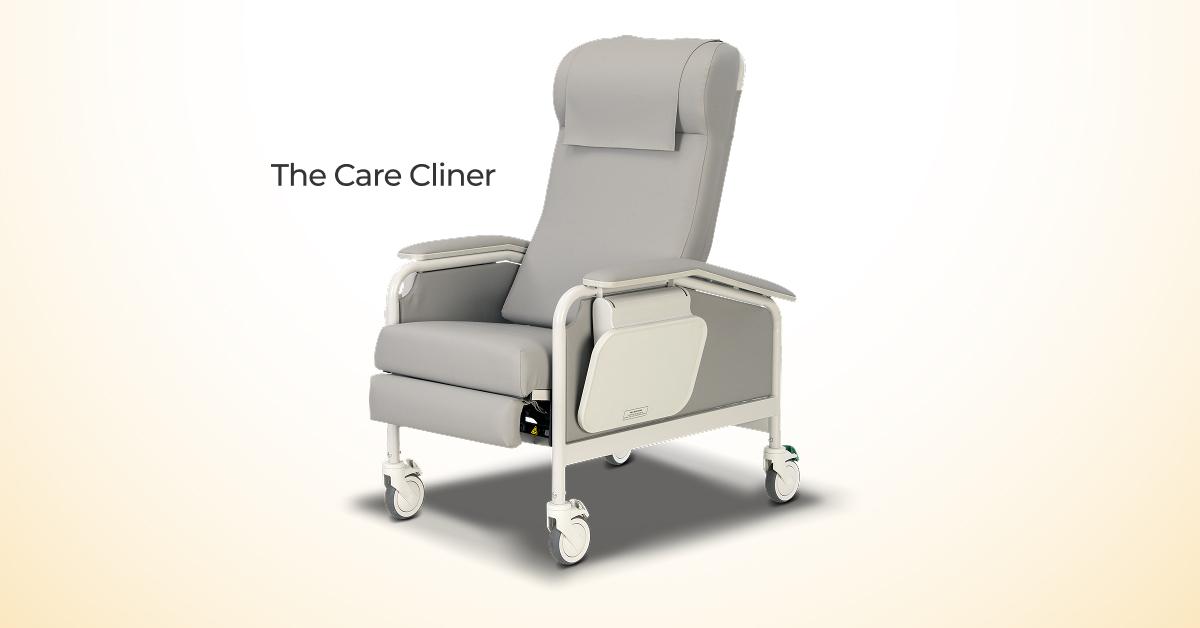
Extended care facilities play a vital role in bridging the gap between acute care and long-term support, often catering to individuals who require ongoing medical supervision, rehabilitation, and assistance with daily activities.
While these facilities strive to offer the highest quality of care, administrators face unique challenges that require thoughtful solutions to enhance patient outcomes and maintain operational efficiency. From managing chronic conditions to addressing staffing shortages, extended care settings demand a proactive approach to ensuring patient comfort and clinical excellence.
This blog explores the core challenges administrators encounter and highlights effective solutions that can elevate the standard of care in extended care facilities.
Managing Complex, Chronic Conditions
The Challenge: Patients in extended care facilities often have multiple comorbidities, including heart disease, diabetes, dementia, and mobility impairments. These conditions require consistent monitoring, personalized care plans, and a multidisciplinary approach to prevent complications. Managing these complex cases places a heavy burden on care teams and can lead to gaps in care coordination.
The Solution:
- Comprehensive Care Plans: Develop individualized care plans that are routinely updated based on patient progress, new diagnoses, and changing needs. Ensure seamless communication between physicians, nurses, physical therapists, and other care team members.
- Remote Monitoring and Telehealth: Use remote patient monitoring (RPM) devices to track vital signs and alert clinicians to early signs of deterioration. Incorporating telehealth consultations can reduce unnecessary hospital transfers and improve specialist access.
- Medication Management Technology: Implement automated medication dispensing systems to reduce medication errors and improve adherence. Leveraging eMAR (electronic medication administration records) systems helps staff monitor dosages and avoid adverse drug interactions.

Sign up to get the latest industry news and offers right in your inbox
Preventing Staff Burnout and Turnover
The Challenge: Staffing shortages and high turnover rates are persistent issues in extended care settings. Prolonged shifts, emotional strain, and the complexity of patient care can lead to fatigue and burnout, ultimately affecting the quality of care delivered.
The Solution:
- Workforce Optimization Tools: Utilize AI-powered scheduling systems to distribute workloads evenly and reduce staff fatigue. Ensure that shifts are balanced and provide opportunities for rest and recovery.
- Training and Upskilling Programs: Offer continuous education and professional development opportunities to empower staff and keep them engaged. Cross-training employees allows flexibility in staffing and prepares them to handle diverse patient needs.
- Mental Health Support: Prioritize mental health by offering counseling services, debriefing sessions, and wellness programs. Recognize and reward staff contributions to boost morale and job satisfaction.
Enhancing Patient Comfort and Experience
The Challenge: Extended care patients often spend long periods in the facility, making comfort and emotional well-being critical factors in their overall health outcomes. A sterile, impersonal environment can lead to feelings of isolation, depression, and dissatisfaction.
The Solution:
- Comfortable and Functional Seating: Equip patient rooms and communal spaces with high-quality medical recliners and sleeper chairs designed for long-term use. Chairs with adjustable positions, heat, and massage features enhance patient comfort and aid in recovery.
- Patient-Centered Design: Incorporate warm colors, natural lighting, and home-like furnishings to create a soothing environment. Noise reduction strategies and sensory stimulation through art and music therapy can further promote a sense of calm and well-being.
- Social Engagement Programs: Encourage social interaction and cognitive stimulation through group activities, therapeutic recreation, and technology-assisted communication with family and friends.

Reducing Infection Risk and Ensuring Compliance
The Challenge: Infection prevention remains a top priority in extended care settings, where vulnerable populations are more susceptible to healthcare-associated infections (HAIs). Maintaining compliance with infection control protocols can be labor-intensive and prone to human error.
The Solution:
- Antimicrobial Fabrics and Surfaces: Use upholstery and finishes with antimicrobial properties to minimize the risk of cross-contamination. Medical seating with easy-to-clean surfaces reduces pathogen transmission.
- Automated Disinfection Systems: Deploy UV-C light technology and other automated disinfection systems to supplement manual cleaning efforts and ensure thorough sanitization of high-touch areas.
- Standardized Protocols and Audits: Implement stringent hand hygiene protocols and conduct regular audits to monitor compliance. Providing ongoing training on infection prevention keeps staff informed and vigilant.
Addressing Mobility and Fall Prevention
The Challenge: Falls are a leading cause of injury and hospitalization among elderly patients in extended care settings. Many residents have compromised mobility, balance issues, and cognitive impairments, making fall prevention a constant challenge.
The Solution:
- Fall Prevention Technology: Implement bed and chair alarms that alert staff when at-risk patients attempt to move unassisted. Pressure-sensing floor mats and wearable motion detectors provide additional layers of protection.
- Safe and Ergonomic Seating: Use chairs with sturdy frames, armrests for support, and features that assist with safe transfers. Medical recliners with powered lift assistance help patients maintain independence while reducing strain on caregivers. Ergonomic seating can also financially benefit healthcare facilities.
- Staff Training in Mobility Support: Ensure that staff receive training on proper transfer techniques and fall prevention strategies. Encourage the use of gait belts, assistive devices, and regular mobility assessments.

Ensuring Regulatory Compliance and Quality Standards
The Challenge: Extended care facilities must comply with a wide range of regulations, including CMS (Centers for Medicare & Medicaid Services) guidelines, state licensing requirements, and infection control standards. Non-compliance can result in penalties, reduced reimbursement, and reputational damage.
The Solution:
- Electronic Health Record (EHR) Integration: Leverage EHR systems to document compliance activities, track quality metrics, and facilitate accurate reporting. A centralized platform streamlines audit processes and ensures adherence to regulatory standards.
- Regular Training and Competency Assessments: Conduct regular staff training on updated protocols, emergency procedures, and patient safety guidelines. Competency assessments help identify gaps and reinforce best practices.
- Internal Quality Audits: Establish routine internal audits to assess compliance with infection control, medication management, and resident safety standards. Implement corrective actions promptly to address deficiencies.

Balancing Cost Management with Quality Care
The Challenge: Extended care facilities operate under tight budgets while striving to deliver high-quality care. Rising operational costs, coupled with decreasing reimbursement rates, make it challenging to invest in new technology and staff development.
The Solution:
- Value-Based Purchasing Programs: Participate in value-based reimbursement models that reward facilities for achieving positive patient outcomes and reducing readmissions. Aligning incentives with quality care encourages efficiency and innovation.
- Data Analytics for Cost Optimization: Use data analytics to identify patterns in resource utilization and pinpoint areas where costs can be reduced without compromising care. Predictive analytics can help administrators forecast staffing needs and minimize unnecessary expenses.
- Partnerships with Vendors: Develop relationships with trusted vendors who offer bulk purchasing options, preventative maintenance plans, and ongoing support. Investing in durable medical equipment with extended warranties reduces long-term replacement costs.
Raising the Standard of Care in Extended Care Facilities
Extended care administrators play a pivotal role in creating environments where patients receive compassionate, high-quality care while maintaining operational efficiency. By addressing challenges with strategic solutions— from adopting advanced technologies to prioritizing staff well-being—facilities can enhance patient comfort, improve clinical outcomes, and ensure compliance with regulatory standards.
Investing in innovations such as remote monitoring, antimicrobial fabrics, ergonomic seating, and AI-powered scheduling systems positions extended care facilities for long-term success. When administrators commit to proactive problem-solving and patient-centered care models, they not only elevate the quality of life for residents but also foster a culture of excellence within their facilities.
By staying ahead of emerging trends and adopting best practices, extended care facilities can continue to meet the evolving needs of their diverse patient populations, ensuring that every individual receives the premium care they deserve.
For Medical Seating Solutions, Turn to Champion Healthcare Solutions
When it comes to addressing challenges, Champion Healthcare Solutions is ready. “Solutions” is even part of our company name. We’ve designed recliners specifically for extended care facilities, their providers, and patients.

Part of our Select Collection, the Care Cliner is an affordable, feature-rich medical seating solution engineered to meet the most demanding applications.
Take the guesswork out of choosing the right chair—use our new virtual chair configurator to build and preview your selection online. Then, request a quote for your facility.
